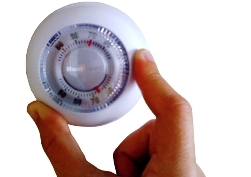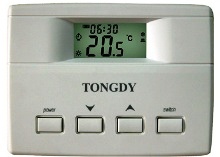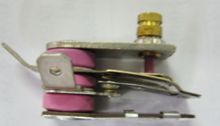Categories: Interesting electrical news, Electrician at home
Number of views: 37616
Comments on the article: 2
Thermostats. The use of temperature controllers in everyday life
 Temperature regulators - what is it? The name itself already shows that this is a device, a mechanism by which you can adjust the temperature.
Temperature regulators - what is it? The name itself already shows that this is a device, a mechanism by which you can adjust the temperature.
In everyday life, temperature controllers are found in almost all devices where one way or another it is necessary to regulate or maintain the temperature within specified limits.
In this article we will try to figure out where, how and which temperature controllers are used.
The most common are three types of temperature controllers:
1) electronic;
2) electromechanical;
3) mechanical.
All three types of temperature regulators, one way or another intersect each other, in terms of design. Let's consider each type of temperature regulators in more detail.
Electronic temperature controllers
 Structurally, they consist of three main parts — a temperature sensor, a signal processing processor, and a control, switching part — a relay or electronic keys.
Structurally, they consist of three main parts — a temperature sensor, a signal processing processor, and a control, switching part — a relay or electronic keys.
The main advantage of electronic temperature controllers is the accuracy of controlling the set temperature, ease of installation and control, reliability. Many models of temperature controllers allow you to program not only the temperature, but also the on / off time of the load, which can significantly save money and also maintain the temperature in a fairly accurate range.
In everyday life, such temperature controllers are used to control the temperature of underfloor heating, to control the general heating and air conditioning system of a house. Reasonable use of these devices allows you to achieve maximum effect in the ratio of price and quality.
Using temperature controllers to control the temperature of warm floorsThere are combined regulators that measure not only the temperature of the floor, but also control the temperature in the room, which allows you to achieve optimal and accurate temperature conditions.
Also, such systems are easily integrated into common system "smart home".
Electromechanical temperature controllers
 By design, these regulators are perhaps the simplest. There are many types of electromechanical relays. Consider the most common.
By design, these regulators are perhaps the simplest. There are many types of electromechanical relays. Consider the most common.
1) Thermostats that can be found in irons, electric stoves, various heaters are made quite simply and reliably and consist of a bimetallic plate and a contact group.
When heated, the plate bends, opening the contact group at the same time, electricity ceases to flow to the load - heating element (heater, spiral). When cooling, the plate returns to its original position, closing the contact, the electricity again enters the load. And so cyclically, as a result of which the required temperature is maintained.
2) Another type of electromechanical temperature controllers is based on a slightly different principle. The operation of these relays is based on the property of expansion of materials when exposed to temperatures.
An excellent example of this type of thermal relay can be called a thermostat in ordinary domestic boiler for heating water. Speaking in simple understandable language, without really going into technical jungle, the thermostat consists of a hollow tube with the substance inside, this tube is in a container of water.
When water is heated, under the influence of temperature, the substance in the tube expands and, through the drive, closes or opens the contact group, thereby maintaining the temperature in the boiler.
Mechanical thermostats-thermostats
This type of temperature controllers is perhaps one of the most common. What you can find in everyday life are temperature regulators in heating systems. Outwardly, they resemble ordinary stopcocks.
The use of such temperature regulators allows you to regulate and maintain the temperature within specified limits for each individual room, which ultimately saves a significant part of your budget.
Structurally, these thermostats are relatively simple and reliable. They consist of a thermal cylinder with a stock. When heated, the substance in the cylinder expands, pushing the rod, which in turn partially blocks the water supply to the radiator. The same operating principle applies to automotive thermostats.
In this article, we examined only the general principle of operation of the most common temperature controllers, such as are found in everyday life. In fact, there are a lot of temperature controllers, and it is very difficult to cover all of them in one article.
See also on this topic:How to choose a thermostat for an electric heating boiler
Sergey Seromashenko
See also at bgv.electricianexp.com
:
